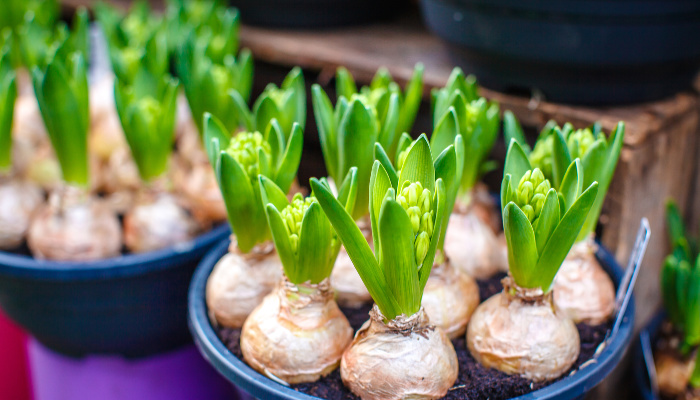Shutterstock

There’s something magical about the way spring flowers appear after a long winter, isn’t there? You need to lay the groundwork in fall to enjoy those glorious garden treasures, however. Luckily, planting fall bulbs is easy—as long as you have patience.
Fall bulbs should go in the ground when temperatures drop to between 40 and 50 degrees in the evenings, but before the ground freezes. It’s important to get your bulbs planted at least 6 weeks before the ground is frozen.
Although you don’t want your bulbs to freeze, some regions of the country need “pre-chilling” to ensure the bulbs will bloom in the spring. Tulips, daffodils, crocuses, hyacinths, and snowdrops all need a lengthy cold period to bloom. If you live in zones 8-11, you can keep your fall bulbs in the fridge for up to 10 weeks while you wait for outside temperatures to drop.
There’s an old saying that bulbs don’t like “wet feet.” Any place you choose to plant your fall bulbs should have good drainage. Aim for sunnier spots in your garden, and add compost or peat moss to feed the plants. Get rid of rocks or weeds, and loosen the soil to a depth of about 8 inches so that the bulbs can develop good roots.
It’s time to plant your fall bulbs! Look at the label that came with your bulbs to find the correct depth for the hole. Place a single bulb in each hole with the pointy end facing up—that’s the side that will send up shoots and blooms.
Fill the hole back up with soil and tap it down gently. Water generously and then forget about the bulbs until spring!
In short, yes! If you don’t have a garden plot, you can still enjoy the beauty of spring flowers. Get a large pot with good drainage and fill it potting mix (not dirt from the ground). Plant your bulbs just as you would in the earth.
If you want to use a small pot or one made from terra cotta, which will not withstand the winter or keep your bulbs insulated, go ahead and plant the bulbs and then put them in a garage or shed to spend the winter before bringing them outside in the spring.
We love the drama of alliums. They’re a member of the garlic family, believe it or not, and they produce huge balls of tiny flowers on long stalks. Daffodils are the quintessential spring flower, and they’re probably the easiest and hardiest of all bulbs.
Tulips come in just about every color of the rainbow—although be warned that the flowers have a relatively short season. Fritillaria are the hipsters of fall bulbs—you probably haven’t heard of them, but they’re really cool. With drooping blossoms in white or unbelievable purple checkerboard patterns, they’re a stunning and delicate addition to your garden.